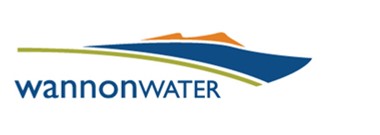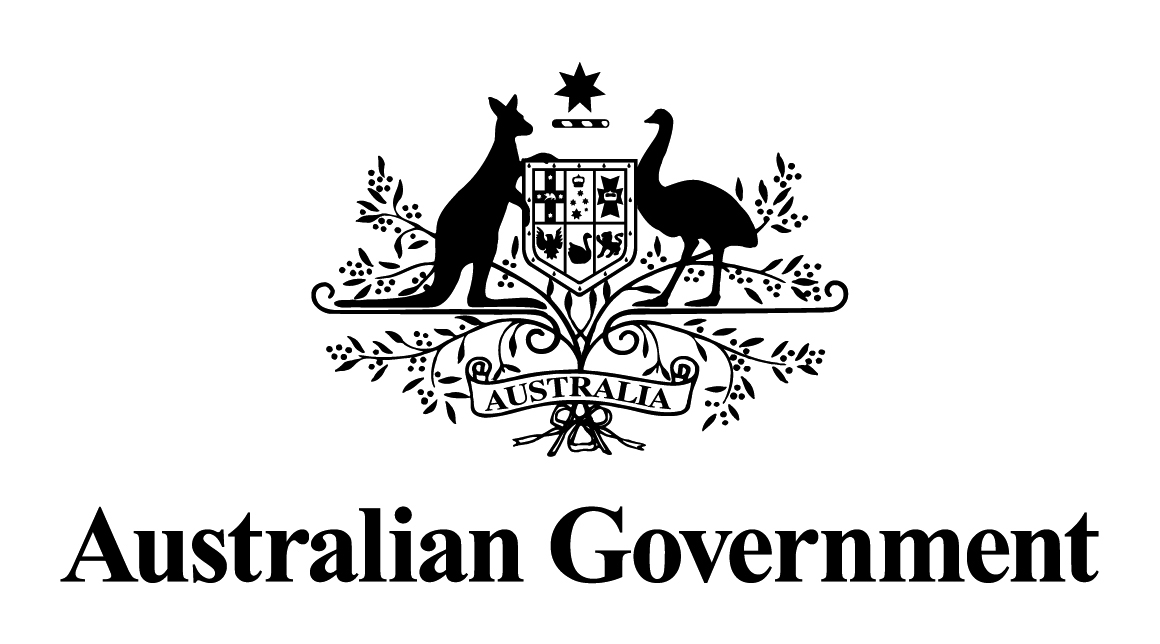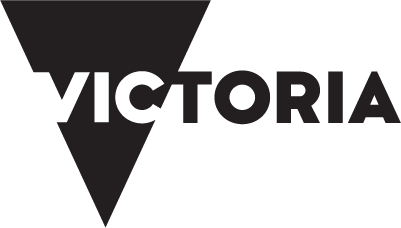Investing for impact
Partnerships are integral to the effective management of the Glenelg Hopkins catchment. Individuals, groups and organisations all have a role to play. When we coordinate our efforts, share knowledge and contribute resources, we increase our impact and derive stronger social, cultural and economic benefits for the community. We are investing in long-term change.
Explore the sections below which outline funding sources, examples of current partnership projects, as well as projects requiring future investment. These projects demonstrate regional partnership priorities and strengthened coordination. They all contribute to the delivery of outcomes in this Regional Catchment Strategy.
For further information, please contact: glenelghopkinsrcs@ghcma.vic.gov.au.
Projects for investment
This section will be used to showcase potential projects and investment opportunities for the Glenelg Hopkins region. These opportunities will reflect the region’s shared vision for integrated catchment management as well as strong partnerships and commitment to action.
The information displayed on this page will be regularly updated to reflect regional planning and potential projects in the region.
New Nature Fund projects
Funding Source: Nature Fund DELWP
Project Coordinator: Marty Gent
The Victorian Government established a ‘Nature Fund’ in August 2022 to invest in high impact projects that delivered on the goals of Biodiversity 2037 and threatened species recovery. The Fund was open to a range of organisations until the $10 million funding pool was spent ($8.6 million General stream, and $1.4 million Traditional Owner stream).
Glenelg Hopkins CMA submitted two Expressions of Interest to the Fund, and were successful in both, securing $1.1 million in new funding for Biodiversity projects over the next three years.
Glenelg Hopkins CMA were the only organisation in the state to be funded for more than one project, representing 41% of funds secured by CMAs state-wide, and 13% of the overall Nature Fund General Stream funding pool.
The projects funded are:
Saving seventeen threatened species on the Victorian Volcanic Plains
Total Investment: $455,000
Themes: Biodiversity
This project will establishment a seed production area and re-introduction program, to improve the trajectory of 17 threatened and culturally significant species on the Victorian Volcanic Plain.
This includes the Button Wrinklewort, Hoary Sunray and Murnong. This will increase population numbers and improving the net condition of over 350 ha of Natural Temperate Grasslands of the Victorian Volcanic Plain.
Delivery Partners: Chatsworth Native Plant Nursery, Woorndoo Chatsworth Landcare Group,Regional Roads Victoria
Local areas: North Eastern Volcanic Plains

The Button Wrinklewort (Rutidosis leptorrhynchoides)
Reversing Decline of the Critically Endangered Southern Bent-wing Bat
Total Investment: $670,000
Themes: Biodiversity
This project is based in the Greater Portland area, focusing on improving outcomes for the Southern Bent-wing Bat and other Critically Endangered Species. Financial pledges from project partners were provided by the Southwest Environment Alliance and Zoos Victoria as leverage to the proposal ($290,000). Members of the Southern Bent-Wing Bat Recovery Team also provided input and pledged ongoing support to the project.
Delivery Partners: Southwest Environment Alliance, SBWB Recovery Team, Arthur Rylah Institute, Zoos Victoria, Parks Victoria DEECA – Barwon Southwest, Natural Environment Program
Local areas: Glenelg Plain

The southern bent–wing bat (Miniopterus orianae bassanii)
Where can I look for funding?
Funding for integrated catchment management (ICM) can come from a number of sources. The following is a summary of some of the funding opportunities that may be available for the region. Click on the links to access more detailed information and websites. If your organisation provides funding for ICM and would like to be included in this page, get in touch at glenelghopkinsrcs@ghcma.vic.gov.au.

Glenelg Hopkins CMA project based funding opportunities as well as partner led opportunities are often promoted through the Glenelg Hopkins CMA website. These can include Landcare grants, volunteer grants, incentives and opportunities for landholder partnership projects.

Wannon Water Ripple Effect Community Partnership Program – community grants and sponsorship opportunities

Australian Government Department of Climate Change, Energy, the Environment and Water – funding programs and opportunities that aim to protect the environment and heritage, and promote climate action.

Australian Government GrantConnect – a guide to all grants available from the Australian Government

Victorian Government Department of Energy, Environment and Climate Action – environmental action supported through grants to Victorian communities.

Victorian Government Grants and Programs – a listing of all Victorian Government grants programs

Victorian Government Department of Energy, Environment and Climate Action (Agriculture Victoria) – a range of funds, grants and programs across different sectors and regions
Snapshot of current projects
The table below outlines some of the projects being implemented across the Glenelg Hopkins region. These projects all contribute to the outcomes of the RCS, and reflect the region’s emphasis on partnership and collaboration. If you would like more information on these projects, or you are interested in becoming a partner, contact us at glenelghopkinsrcs@ghcma.vic.gov.au. We also post regular updates on all of our projects through our website and social media.
| PROJECT TITLE | OVERVIEW | DELIVERY PARTNERS | INVESTMENT | THEME | LOCAL AREAS | STATUS |
|---|---|---|---|---|---|---|
| Red-tails of the Glenelg Plain | This project supports actions to prevent further population decline of the endangered south-eastern red-tailed black cockatoo. | Barengi Gadjin Land Council, BirdLife Australia, Greening Australia, Glenelg Hopkins CMA and Gunditj Mirring Traditional Owners Aboriginal Corporation | $1.2 million Australian Government Regional Land Partnerships | Biodiversity | Glenelg Plain and North Central Tablelands | In progress |
Saving seventeen threatened species on the Victorian Volcanic Plains | This project will see the establishment a seed production area and re-introduction program, to improve the trajectory of 17 threatened and culturally significant species on the Victorian Volcanic Plain. This includes the Button Wrinklewort, Hoary Sunray and Murnong. This will increase population numbers and improving the net condition of over 350 ha of Natural Temperate Grasslands of the Victorian Volcanic Plain. | Chatsworth Native Plant Nursery, Woorndoo Chatsworth Landcare Group, Regional Roads Victoria | $455,000 Nature Fund, DEECA | Biodiversity | North Eastern Volcanic Plains | In progress |
Reversing Decline of the Critically Endangered Southern Bent-wing Bat | This project is based in the Greater Portland area, focusing on improving outcomes for the Southern Bent-wing Bat and other Critically Endangered Species. Financial pledges from project partners were provided by the Southwest Environment Alliance and Zoos Victoria as leverage to the proposal ($290,000). Members of the Southern Bent-Wing Bat Recovery Team also provided input and pledged ongoing support to the project. | Southwest Environment Alliance, SBWB Recovery Team, Arthur Rylah Institute, Zoos Victoria, Parks Victoria, DEECA, Barwon Southwest, Natural Environment Program | $670,000 Nature Fund, DEECA | Biodiversity | Glenelg Plain | In progress |
| Victorian Volanic Plains Recovery Project | The Victorian Volcanic Plains (VVP) Recovery Project is targeting the critically endangered Natural Temperate Grassland of the VVP ecological community. | Arthur Rylah Institute, DELWP, Eastern Maar Aboriginal Corporation, Glenelg Hopkins CMA, Tust for Nature, Wadawurrung Aboriginal Corporation | $500,000 Australian Government Regional Land Partnerships | Biodiversity | Glenelg Plain, North Central Tablelands, North Eastern Plains, South Eastern Coastal Plains | In progress |
| Sustainable Agriculture: Soils4Farms | Soils4Farms will support farmers to further knowledge and adopt practices to improve and protect the condition of soil, appropriate to their farming system. | Agriculture Victoria (Department of Jobs, Precincts and Regions), Federation University Australia, Southern Farming Systems, WestVic Dairy, Winda Mara Aboriginal Corporation | $2.0 million Australian Government Regional Land Partnerships | Land | Glenelg Plain, North Central Tablelands, North Eastern Volcanic Plains, South Eastern Coastal Plains | In progress |
| Coastal Connections | The Coastal Connections Project aims to improve the trajectory of the Australasian Bittern and to stabilise the population of the Orange-bellied Parrot and Eastern Curlew. Key actions focus on the protection and improvement of critical habitat and population monitoring. | BirdLife Australia, Nature Glenelg Trust, Gunditj Mirring Traditional Owner Aboriginal Corporation, La Trobe University, DELWP | $2.7 million Australian Government Regional Land Partnerships | Marine and Coastal, Biodiversity | Glenelg Plain, South Eastern Coastal Plain | In progress |
| Protecting the Hooded Plover | This project aims to stabilise the Hooded Plover population along the south-eastern coastline of Victoria and South Australia. | BirdLife Australia, community volunteers | $1.5 million Australian Government Regional Land Partnerships | Marine and Coastal, Biodiversity | Glenelg Plain, South Eastern Coastal Plain | In progress |
| Protection for Hooded Plover Chicks | This project aims to support the stabilisation of the Hooded Plover population along the south-eastern coastline of Victoria and South Australia. The project will actively manage threats to priority nest sites. | BirdLife Australia, community volunteers | $100,000 Australian Government Environmental Restoration Fund | Marine and Coastal, Biodiversity | Glenelg Plain, South Eastern Coastal Plain | In progress |
| Environmental Water and Community Engagement | This project will achieve Environmental Water Reserve objectives across the region through effective water management and community engagement. The objective of the Environmental Water Reserve is to preserve the environmental values and health of water ecosystems, including their biodiversity, ecological functioning and quality of water, and other uses that depend on environmental condition. | Glenelg Hopkins CMA, Gunditj Mirring Traditional Owner Aboriginal Corporation, Barengi Gadjin Land Council, Burrandies Aboriginal Corporation, Eastern Maar Aboriginal Corporation, Victorian Environmental Water Holder, GWMWater, Southern Rural Water, Arthur Rylah Institute, Wannon Water, Deakin University, Parks Victoria | Victorian Water Program Investment Framework (DELWP) | Water | All | In progress |
| Our Catchments Our Communities - Partnerships and Capacity | This project supports the maintenance and strengthening of key regional and local relationships across the catchment to build capacity and support partnerships for enhanced integrated catchment management in the Glenelg Hopkins region. | Glenelg Hopkins CMA, Gunditj Mirring Traditional Owners Aboriginal Corporation, Barengi Gadjin Land Council, Wadawurrung Traditional Owners Aboriginal Corporation, Eastern Maar Aboriginal Corporation, Parks Victoria, DELWP, Trust for Nature, Agriculture Victoria, Wannon Water | Victorian Water Program Investment Framework (DELWP) | Community | All | In progress |
| Our Catchments Our Communities - On-ground Stewardship | The Glenelg Hopkins on-ground catchment stewardship project focuses on strategic partnerships to improve catchment health and climate resilience through measures that support wetland health and connectivity in the agricultural landscape of the Greater Grampians. | Glenelg Hopkins CMA, Panyyabyr Landcare Group, Upper Hopkins Land Management Group, Beyond Bolac Catchment Action Group, Upper Mount Emu Landcare Network, Nature Glenelg Trust, Eastern Maar Aboriginal Corporation, Gunditj Mirring Traditional Owners Aboriginal Corporation | Victorian Water Program Investment Framework (DELWP) | Water, Community, | North Eastern Volcanic Plains, North Central Tablelands | In progress |
| Implementation of the Regional Floodplain Management Strategy | This project will support the Glenelg Hopkins CMA to work with partners to implement the Glenelg Hopkins Regional Floodplain Management Strategy (RFMS). | Glenelg Hopkins CMA, Local Government, VicSES, Barengi Gadjin Land Council, Eastern Maar Aboriginal Corporation, Gunditj Mirring Traditional Owners Aboriginal Corporation, Wadawurrung Aboriginal Corporation | Victorian Water Program Investment Framework (DELWP) | Water | All | In progress |
| Floodplain and Waterway Management | This project will support the delivery of Glenelg Hopkins CMA's statutory functions and undertake floodplain and waterway management responsibilities across all catchments and municipalities within the Glenelg Hopkins region. | Glenelg Hopkins CMA | Victorian Water Program Investment Framework (DELWP) $TBC | Water | All | In progress |
| Regional Landcare Grants | This project involves the delivery of a small grants program on behalf of the Victorian Government. The grants program supports the region's Landcare and other environmental groups and networks with funding for on-ground activities and group support. | Glenelg Hopkins CMA, regional Landcare and other environmental groups and networks | DELWP | Community | All | In progress |
| Glenelg Freshwater Mussel protection and recovery post Crawford River fire | To minimise the impact of the 2020 fire on the mussel, this project will improve habitat quality across its known and past distribution; protect critical habitat where the mussel is now found; monitor recovery progress; and identify other mussel populations in the Crawford River area. | Glenelg Hopkins CMA, Arthur Rylah Institute (ARI), La Trobe University, Australian Bluegum Plantations (ABP) Pty Ltd, Hancock Victorian Plantations (HVP) | Australian Government Bushfire Wildlife and Habitat Recovery $180,000 | Biodiversity, Water | Glenelg Plain | In progress |
| Habitat for the rivers of Warrnambool | This project will support more sustainable and productive fisheries by reinstating 100 in-stream habitat features and 4 ha of riparian vegetation along 2.95 km of the Hopkins and Merri Rivers | The Glenelg Hopkins CMA, the Merri Alliance, Ozfish South west Victoria, Fishcare south west, Warrnambool Angling Club, Allansford Angling Club, Koroit Angling Club, Port Fairy Angling Club, Yambuk Angling Club, Deakin University, Coastcare Landcare Group, Friends of Platypus Park, VR Fish Victoria, Victorian Fisheries Authority, Fishcare Victoria, Vic Bream Classic, Regional Roads Victoria | Australian Government Fisheries Habitat Restoration $306,796 | Water | South Eastern Coastal Plains | In progress |
| Enhancing estuaries in the Portland Basin | This project will partner with local angling groups to support sustainable and productive fisheries in south-west Victoria. Works will be delivered on five estuaries, the Moyne River, Yambuk Lake, Fitzroy River, Surry River and Fawthrop Lagoon. | Glenelg Hopkins CMA, Fishcare South West, OzFish South West Victoria, Fishcare South West, Warrnambool Angling Club, Allansford Angling Club, Koroit Angling Club, Port Fairy Angling Club, Yambuk Angling Club, Coastcare/Landcare Groups, Moyne Shire Council, Glenelg Shire Council, VR Fish, Victorian Fisheries Authority, Fishcare Victoria, Parks Victoria, DELWP, Regional Roads Victoria | Australian Government Fisheries Habitat Restoration $290,201 | Water, Biodiversity | Glenelg Plain | In progress |
The National Landcare Program – priorities for investment
The National Landcare Program is a key part of the Australian Government’s long-standing commitment to natural resource management.
Regional Land Partnerships (RLP) is a major component of the second phase of the National Landcare Program. The aim of RLP is “to protect, conserve and provide for the productive use of Australia’s water, soil, plants and animals and the ecosystems in which they live and interact, in partnership with governments, industry and communities“.
RLP outcomes and investment priorities that are relevant to the Glenelg Hopkins region are outlined below.
| RLP long-term outcomes | RLP 5-year outcomes | Investment priorities |
|---|---|---|
| Outcome 1: The ecological character of Ramsar sites is maintained or improved | Outcome 1: By 2023, there is restoration of, and reduction in threats to, the ecological character of Ramsar Sites, through the implementation of priority actions | Glenelg Estuary and Discovery Bay Wetlands Western District Lakes (Lake Bookar) |
| Outcome 2: The trajectory of species targeted under the Threatened Species Strategy, and other EPBC Act priority species, is improved | Outcome 2: By 2023, the trajectory of species targeted under the Threatened Species Strategy, and other EPBC Act priority species, is stabilised or improved | Australasian Bittern (Botaurus poiciloptilus) Button Wrinklewort (Rutidosis leptorrhynchoides) Eastern Barred Bandicoot (Mainland) (Perameles gunnii Victorian subspecies) Eastern Curlew (Numenius madagascariensis) Hooded Plover (eastern) (Thinornis rubricollis rubricollis) Malleefowl (Leipoa ocellate) Orange-bellied Parrot (Neophema chrysogaster) Plains Spiny Rice-flower (Pimelea spinescens subsp. Spinescens) Plains-wanderer (Pedionomus torquatus) Red-tailed Black-Cockatoo (south-eastern) (Calyptorhynchus banksii graptogyne) Swift Parrot (Lathamus discolour) |
| Outcome 3: The natural heritage Outstanding Universal Value of World Heritage properties is maintained or improved | Outcome 3: By 2023, invasive species management has reduced threats to the natural heritage Outstanding Universal Value of World Heritage properties through the implementation of priority actions | Budj Bim Cultural Landscape |
| Outcome 4: The condition of EPBC Act listed Threatened Ecological Communities is improved | Outcome 4: By 2023, the implementation of priority actions is leading to an improvement in the condition of EPBC Act listed Threatened Ecological Communities | Grassy Eucalypt Woodland of the Victorian Volcanic Plain Grey Box (Eucalyptus microcarpa) Grassy Woodlands and Derived Native Grasslands of South-eastern Australia Natural Temperate Grassland of the Victorian Volcanic Plain Seasonal Herbaceous Wetlands (Freshwater) of the Temperate Lowland Plains Subtropical and Temperate Coastal Saltmarsh White Box-Yellow Box-Blakely's Red Gum Grassy Woodland and Derived Native Grassland |
| Outcome 5: The conditions of soil, biodiversity and vegetation are improved | Outcome 5: By 2023, there will be increased awareness and adoption of land management practices that improve and protect the condition of soil, biodiversity and vegetation | Soil Acidification Soil Carbon Hillslope Erosion |
| Outcome 6: Agriculture systems have adapted to significant changes in climate and market demand | Outcome 6: By 2023, there is an increase in the capacity of agriculture systems to adapt to significant changes in climate and market demands for information on provenance and sustainable production | Vegetation and biodiversity on farms Agricultural systems adapting to climate change |


